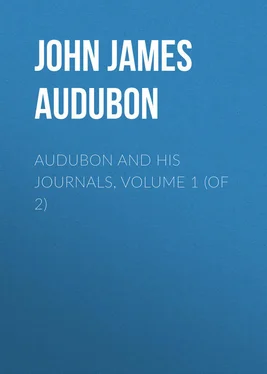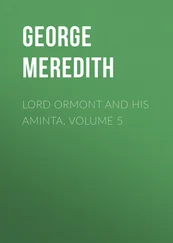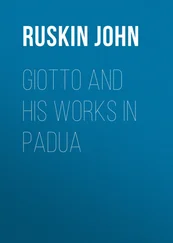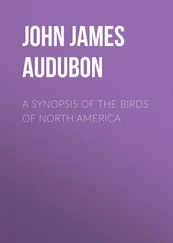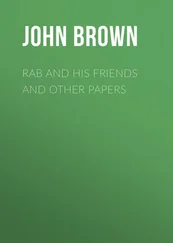John Audubon - Audubon and his Journals, Volume 1 (of 2)
Здесь есть возможность читать онлайн «John Audubon - Audubon and his Journals, Volume 1 (of 2)» — ознакомительный отрывок электронной книги совершенно бесплатно, а после прочтения отрывка купить полную версию. В некоторых случаях можно слушать аудио, скачать через торрент в формате fb2 и присутствует краткое содержание. Жанр: foreign_antique, foreign_prose, на английском языке. Описание произведения, (предисловие) а так же отзывы посетителей доступны на портале библиотеки ЛибКат.
- Название:Audubon and his Journals, Volume 1 (of 2)
- Автор:
- Жанр:
- Год:неизвестен
- ISBN:нет данных
- Рейтинг книги:5 / 5. Голосов: 1
-
Избранное:Добавить в избранное
- Отзывы:
-
Ваша оценка:
- 100
- 1
- 2
- 3
- 4
- 5
Audubon and his Journals, Volume 1 (of 2): краткое содержание, описание и аннотация
Предлагаем к чтению аннотацию, описание, краткое содержание или предисловие (зависит от того, что написал сам автор книги «Audubon and his Journals, Volume 1 (of 2)»). Если вы не нашли необходимую информацию о книге — напишите в комментариях, мы постараемся отыскать её.
Audubon and his Journals, Volume 1 (of 2) — читать онлайн ознакомительный отрывок
Ниже представлен текст книги, разбитый по страницам. Система сохранения места последней прочитанной страницы, позволяет с удобством читать онлайн бесплатно книгу «Audubon and his Journals, Volume 1 (of 2)», без необходимости каждый раз заново искать на чём Вы остановились. Поставьте закладку, и сможете в любой момент перейти на страницу, на которой закончили чтение.
Интервал:
Закладка:
"Such hospitality is from the heart, and when the squatter came in, his welcome was not less genuine than that of his family. Night fell; I slept soundly on some bearskins, but long before day was ready to march. My hostess was on the alert; after some breakfast she gave me a small loaf and some venison in a clean rag, and as no money would be received, I gave the lads a flask of gunpowder, a valuable article in those days to a squatter.
"My way lay through woods, and many small crossroads now puzzled me, but I walked on, and must have travelled another forty-five miles. I met a party of Osage Indians encamped, and asked in French to stay with them. They understood me, and before long I had my supper of boiled bear's-fat and pecan-nuts, of which I ate heartily, then lay down with my feet to the fire, and slept so soundly that when I awoke my astonishment was great to find all the Indians had gone hunting, and only left two dogs to keep the camp free from wolves.
"I walked off gayly, my dog full of life, but met no one till four o'clock when I passed the first salt well, and thirty minutes more brought me to Shawanee Town. As I entered the inn I was welcomed by several whom I knew, who had come to purchase salt. I felt no fatigue, ate heartily, slept soundly without being rocked, and having come forty miles had only forty-seven more to walk to reach my home. Early next morning I pursued my way; the ferry boat took me from Illinois to Kentucky, and as night came I found myself with my wife beside me, my child on my knee."
The time from now till 1819 was the most disastrous period of Audubon's life, as regarded his finances. With his brother-in-law, Thomas W. Bakewell, he engaged in various ventures in which, whatever others did, he lost money at every turn. The financial affairs of Kentucky were, it is true, not on a very sound basis, but Audubon frankly acknowledges the fault in many cases was his own. Thomas W. Bakewell was often in New Orleans, where they had a mercantile establishment, and Audubon spent not only days, but weeks and months, at his favorite pursuits. On his journeys to Philadelphia to procure goods he wandered miles in all directions from the main route; when in Henderson he worked, at times, very hard in the mill, for, indeed, he never did anything except intensely; but the cry of the wild geese overhead, the sound of the chattering squirrel, the song of the thrush, the flash of the humming-bird with its jewelled throat, were each and all enough to take him from work he hated as he never hated anything else.
When first in Henderson he bought land, and evidently had some idea of remaining there permanently; for, "on March 16, 1816, he and Mr. Bakewell took a ninety-five years' lease of a part of the river front between First and Second Sts., intending to erect a grist and saw mill, which mill was completed in 1817, and yet stands, though now incorporated in the factory of Mr. David Clark. The weather-boarding whip-sawed out of yellow poplar is still intact on three sides, the joists are of unhewn logs, and the foundation walls of pieces of flat broken rock are four and a half feet thick. For those days it was built on a large scale, and did the sawing for the entire country." 25 25 From "History of Henderson County, Kentucky," by E. L. Starling, page 794.
It has been said that the inside walls had many drawings of birds on them, but this, while quite likely, has never been proved; what was proved conclusively is that, from his woodcutters, whose labors were performed on a tract of forest land of about 1200 acres, which Audubon purchased from the government, to those who were his partners, by far the greater number had the advantage of him. The New Orleans venture has a similar record; money left him by his father was lost by the failure of the merchant who held it until Audubon could prove his right to it, and finally he left Henderson absolutely penniless. He writes: "Without a dollar in the world, bereft of all revenues beyond my own personal talents and acquirements, I left my dear log house, my delightful garden and orchards with that heaviest of burdens, a heavy heart, and turned my face toward Louisville. This was the saddest of all my journeys, – the only time in my life when the Wild Turkeys that so often crossed my path, and the thousands of lesser birds that enlivened the woods and the prairies, all looked like enemies, and I turned my eyes from them, as if I could have wished that they had never existed."
From Louisville Audubon went almost at once to Shippingport, where he was kindly received by his friends Nicholas Berthoud, who was also his brother-in-law, and the Tarascon family. Here he was joined by his wife and two sons, Victor Gifford and John Woodhouse, and again I quote from Audubon's own words: "As we were straitened to the very utmost, I undertook to draw portraits at the low price of five dollars per head, in black chalk. I drew a few gratis, and succeeded so well that ere many days had elapsed I had an abundance of work; and being industrious both by nature and habit I produced a great number of those black-chalk sketches." 26 26 Of these many sketches few can be traced, and none purchased.
This carried him on for some months, but the curse, or blessing, of the "wandering foot" was his, and as soon as money matters were a little ahead, off he went again to the forests. It was during these years, that is from 1811 to 1819, that many months were passed hunting with the Indians, the Osage tribe being the one whose language Audubon spoke. Late in life he wrote: "Of all the Indian tribes I know, the Osage are by far the superior." With them he delighted to track the birds and quadrupeds as only an Indian or one of like gifts, can; from them he learned much woodcraft; with them he strengthened his already iron constitution; and in fearlessness, endurance, patience, and marvellously keen vision, no Indian surpassed him.
He had a wonderful gift of making and retaining friends, and even in these days of poverty and depression he never seemed too poor to help others; and certainly from others he received much kindness, which he never ceased to remember and acknowledge. Through one of these friends – I believe a member of the Tarascon family – he was offered a position in the Museum at Cincinnati. Without delay, or any written agreement, Audubon and his family were again (1818) in new surroundings, and the work being congenial, he entered heartily into it with Mr. Robert Best. The promised salary was large, but being never paid Audubon began drawing classes to support his modest household. In Cincinnati he first met Mr. Daniel Mallory (whose second daughter afterwards married Victor G. Audubon) and Captain Samuel Cummings. This latter gentleman had many tastes similar to Audubon's, and later went with him to New Orleans.
The life at Cincinnati was one of strict economy. Mrs. Audubon was a woman of great ability and many resources, and with one less gifted her unpractical husband would have fared far worse than he did. To quote again: "Our living here [Cincinnati] is extremely moderate; the markets are well supplied and cheap, beef only two and a half cents a pound, and I am able to provide a good deal myself; Partridges are frequently in the streets, and I can shoot Wild Turkeys within a mile or so; Squirrels and Woodcock are very abundant in the season, and fish always easily caught."
Even with these advantages, Audubon, receiving no money 27 27 Mrs. Audubon afterwards received four hundred dollars, of the twelve hundred dollars due; the remainder was never paid.
from Dr. Drake, president of the Museum, decided on going to New Orleans. He had now a great number of drawings and the idea of publishing these had suggested itself both to him and his wife. To perfect his collection he planned going through many of the Southern States, then pushing farther west, and thence returning to Cincinnati. On Oct. 12, 1820, he left Cincinnati with Captain Samuel Cummings for New Orleans, but with a long pause at Natchez, did not reach that city before mid-winter, where he remained with varying success until the summer of 1821, when he took a position as tutor in the family of Mrs. Charles Percy of Bayou Sara. Here, in the beloved Louisiana whose praises he never wearied of singing, whose magnolia woods were more to him than palaces, whose swamps were storehouses of treasures, he stayed till autumn, when, all fear of yellow fever being over, he sent for his wife and sons. Many new drawings had been made in this year of separation from them, and these were by far the greater part of the furniture in the little house in Dauphine St., to which he took his family on their arrival in December, 1821.
Интервал:
Закладка:
Похожие книги на «Audubon and his Journals, Volume 1 (of 2)»
Представляем Вашему вниманию похожие книги на «Audubon and his Journals, Volume 1 (of 2)» списком для выбора. Мы отобрали схожую по названию и смыслу литературу в надежде предоставить читателям больше вариантов отыскать новые, интересные, ещё непрочитанные произведения.
Обсуждение, отзывы о книге «Audubon and his Journals, Volume 1 (of 2)» и просто собственные мнения читателей. Оставьте ваши комментарии, напишите, что Вы думаете о произведении, его смысле или главных героях. Укажите что конкретно понравилось, а что нет, и почему Вы так считаете.
